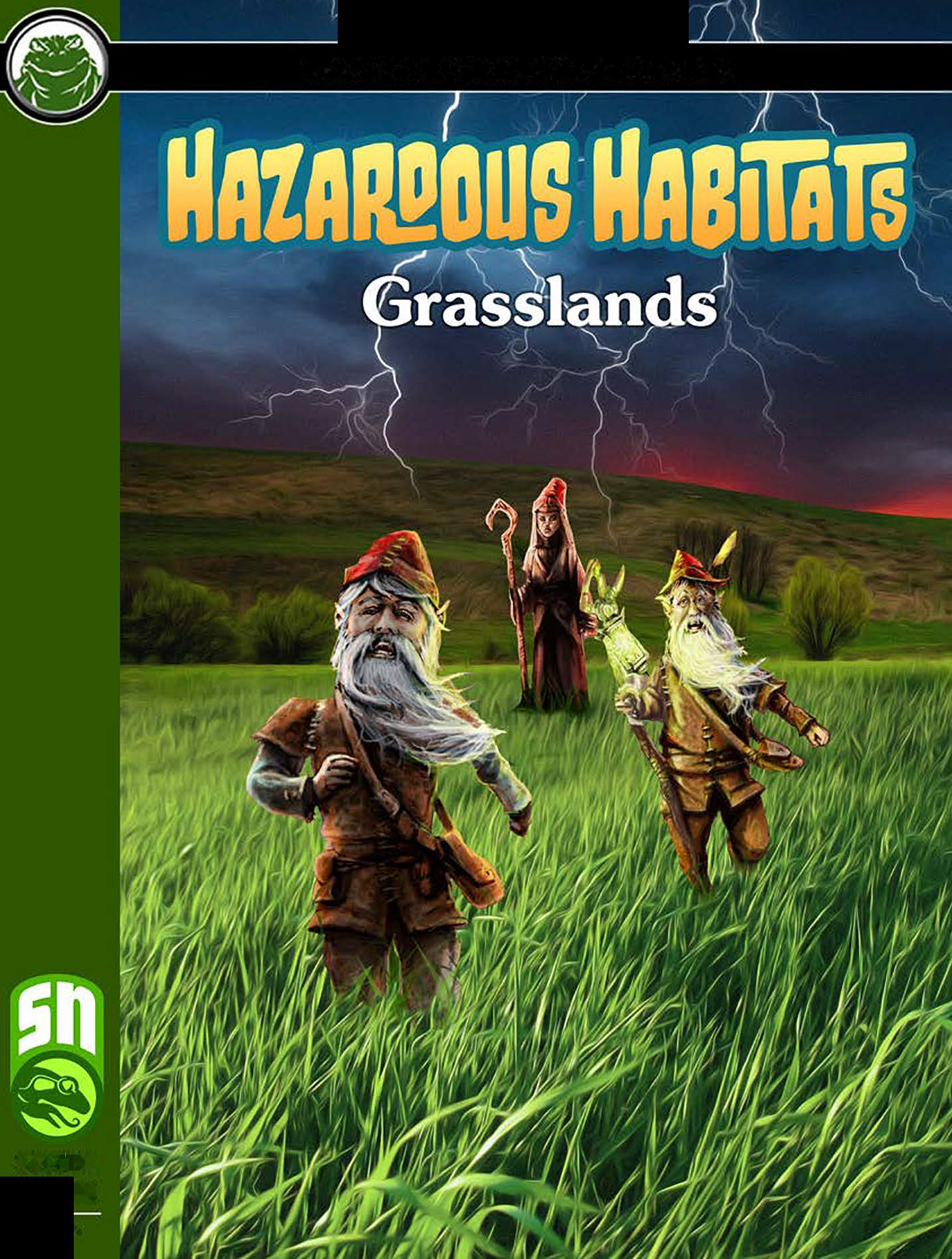froggodtrial
Hazardous Habitats: Grasslands
Hazardous Habitats: Grasslands
Couldn't load pickup availability
What is the Hazardous Habitat Series?
Hazardous Habitats is a series of system-neutral supplements for any roleplaying game that offers a deep exploration of a specific environment. Temperature, terrain, adventure seeds, natural hazards, methods of travel and survival, and weather patterns are all detailed in an instantly insertable way for use at your table.
A gentle breeze rolls through the endless fields, swaying grasses taller than the average man as if they were dancing to the beat of a silent drummer. The vast sea of greenery stretches as far as the eye can see across a topographically featureless landscape. These are the images commonly associated with the plains. They are seen by many as a monotonous tapestry of green grass and amber grain. Yet, this flatland teems with life. Countless herbivores leisurely graze on the lush plants growing in the rich soil. Meanwhile, predators hidden in the grass wait for the opportunity to pounce on the herd’s most vulnerable member. Unlike any other biome, these beasts share some responsibility for shaping their grassy environment. They devour and trample any tree saplings struggling to take root in the earth. Their voracious appetites and thundering hooves help prevent the plains from transforming into forests.
In many respects, the plains, or the more accurate term — grasslands — act as a middle ground between the arid deserts and the moist forests. Many scholars refer to the grasslands as a transition zone because this fertile land separates the two extremes of the environmental spectrum. bThe grasslands receive enough rain to allow grasses, smaller flowering plants, and legumes to take root and flourish, but there is usually not enough moisture and nutrients in the soil to support large shrubs and trees. However, another natural and sometimes manmade force plays a more significant role in stifling tree growth in the grasslands — fire. Grasslands experience an annual rainy season and a dry season. During the drier months, the brown, desiccated stalks and withering blades of grass act as tinder. Raging infernos spawned by lightning strikes, extreme heat, and careless people race across the plains at breakneck speed, consuming everything in their path. Grasses quickly rebound from the fiery conflagrations because their root crowns lie underground. Trees succumb to the flames. The blaze destroys the burgeoning sapling and the tree’s shallow root system, which is too close to the surface to withstand the fire’s intense heat.


